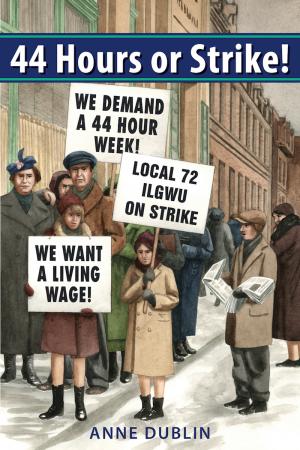As members of a professional union, we can take for granted the struggles of those in trade unions who came before us. However, it is worthwhile to understand and appreciate the harsh working conditions (few breaks, too hot or cold environments, poor air circulation) and harassment (sexual, physical, verbal) dealt with by those who came before. While these conditions may not directly correlate with our own, knowing the struggles of the past gives an appreciation for better working conditions.
With the backdrop of the Great Depression, 44 Hours or Strike! takes readers on a journey of two teenage girls’ first encounters with trade unionism as the International Ladies’ Garment Workers Union led workers on a strike that lasted over 3 months. The story, set in Toronto during the winter and spring of 1931, begins with Jewish sisters Sophie and Rose who have had to drop out of school in order to support their ailing mother (their father had already died). During this time of upheaval, they bond with each other, and with other garment workers at the local union hall. Throughout the book, there are “cameos” from some early union activists, notably Bernard Shane and Emma Goldman. The girls learn the importance of sticking together and not losing sight of the goal of better working conditions for all workers, even in the face of arrest, physical and sexual assault, and their mother’s illness. Woven through the story are issues of anti-Semitism, highlighting the girls’ (and the majority of women garment workers’) Jewish heritage.
While the book capably introduces many concepts (sexism, classism, anti-Semitism, violence, prison conditions), at times it feels awkwardly pieced together; Dublin is trying to cover too many different issues in one story. Using this book effectively will require teachers to provide considerable context to the students.That said, this book could be used by students in Grade 8 with clear connections to the history curriculum.
The well-chosen photos in the book help to bring to life Toronto in the 1930s. Students and teachers familiar with the city will be able to make many connections and recognize familiar locations; Google Streetview could also provide some interesting comparison opportunities.
Organizations like ETFO know that teaching young people about historic union experiences can not only help bolster our appreciation of our struggles, but also can connect us with the struggles of all workers today. 44 Hours or Strike! is a first step in making that connection.
Catherine Inglis is a member of the Elementary Teachers of Toronto.
